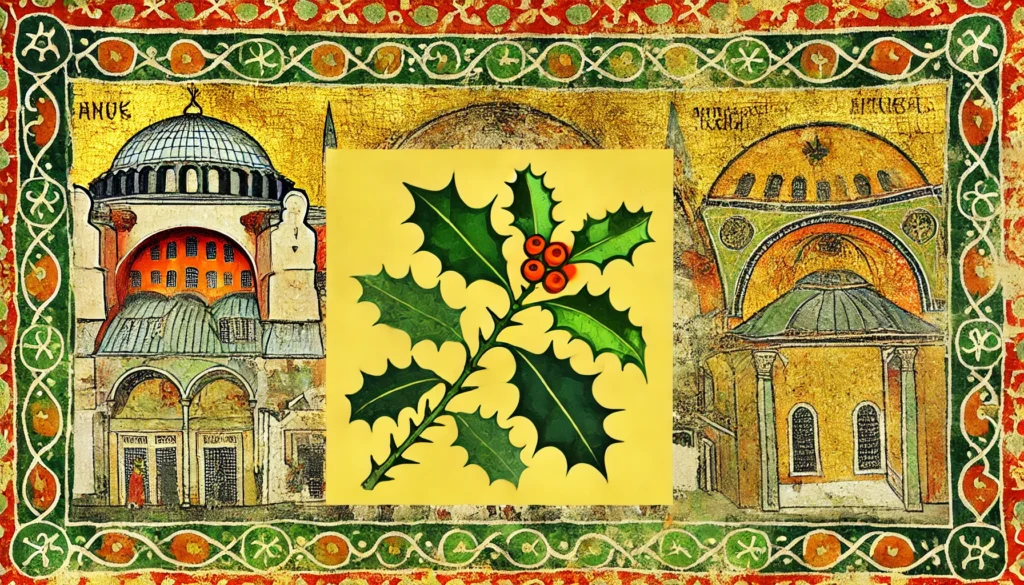

Home » Cat Plants » Could the English Holly Plant Harm Your Cat?

English Holly (Ilex aquifolium), also known as European holly or Christmas holly, is mildly toxic to cats if ingested. While not usually causing a severe allergic reaction, holly leaves and berries contain saponins and other compounds that can irritate a cat’s digestive system.
This popular evergreen shrub is commonly found in gardens and used in holiday decorations.
Ingestion may cause mild gastrointestinal upset, but is generally not life-threatening.
Ingestion can result in mild symptoms like vomiting, diarrhea, or drooling. Rarely fatal but may require veterinary care.
Eating these plants can lead to more pronounced symptoms like abdominal pain, lethargy, or difficulty breathing. Veterinary intervention may be necessary.
Ingesting even small amounts can cause severe symptoms like organ damage, seizures, or cardiac failure without rapid treatment.
All parts of these plants are extremely poisonous to cats and can quickly lead to death, even with immediate veterinary care.
** Please note: Please note that toxicity level can vary based on the amount ingested and the specific cat. It's always best to keep these plants completely inaccessible to cats and seek immediate veterinary care or call the poison hotline if you suspect your cat has ingested any part of a toxic plant.
If a cat eats holly leaves or berries, it may experience gastrointestinal upset. Common signs include:
In rare cases of a large ingestion, symptoms could progress to tremors, seizures, or coma. Punctures from the sharp leaf spines may cause irritation in the mouth.
If you suspect your cat has eaten English Holly, contact your veterinarian. They will likely recommend the following steps:
Your vet can provide the best course of treatment based on the amount ingested and your cat’s symptoms. Quick treatment usually results in a good prognosis.

A: Yes, cats can be allergic to English Holly. Symptoms of an allergic reaction may include itching, sneezing, and skin irritation.
A: Yes, English Holly is toxic to cats. Ingesting any part of this plant can cause symptoms such as vomiting, diarrhea, and drooling.
A: Symptoms of English Holly poisoning in cats include vomiting, diarrhea, excessive drooling, and abdominal pain. Immediate veterinary care is recommended if ingestion is suspected.
A: To prevent contact, ensure that English Holly is not present in your home or garden. Keep your cat indoors or monitor outdoor activities closely to avoid exposure.
A: If your cat ingests English Holly, contact your veterinarian immediately. Do not induce vomiting unless instructed by a veterinary professional. Immediate medical attention is necessary.
A: Yes, English Holly is commonly found in gardens and as an ornamental plant. It is important to ensure this plant is kept out of reach of cats to prevent accidental ingestion.
English Holly has a long history of use in Europe, dating back to ancient Celtic and Roman traditions. Seen as a symbol of eternal life and fertility, holly was used in pagan winter solstice celebrations. As Christianity spread, the prickly leaves came to represent Jesus’ crown of thorns and the red berries his blood, and holly became associated with Christmas. The wood has also been used to make walking sticks, birdcages, and chess pieces.
Today, holly is a popular ornamental plant and is still featured in Christmas decor, though precautions should be taken to keep pets from nibbling the alluring sprigs.
Please note: The information shared in this post is for informational purposes only and should not be considered as veterinary medical advice.
🐾 A hilarious or heart-melting cat video
🐾 Our latest paws-on review of a cool cat toy